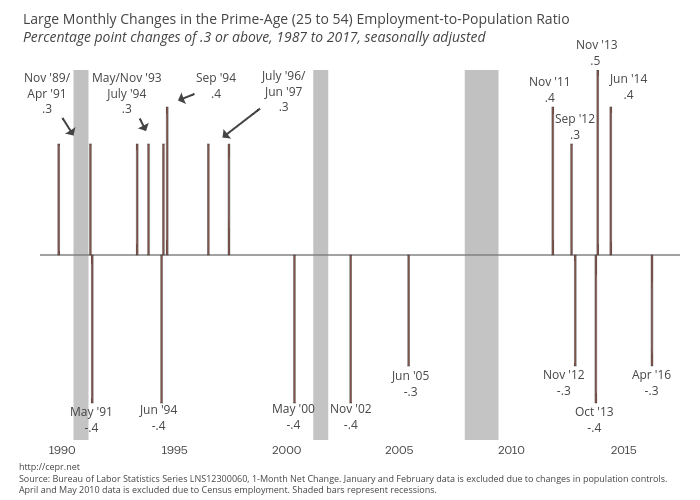Fact-based, data-driven research and analysis to advance democratic debate on vital issues shaping people’s lives.
Center for Economic and Policy Research
1611 Connecticut Ave. NW
Suite 400
Washington, DC 20009
Tel: 202-293-5380
Fax: 202-588-1356
https://cepr.net
July 7, 2017
According to the latest jobs report, 245,000 net new jobs in June raised the overall employment-to-population ratio (EPOP) from 60.0 percent in May to 60.1 percent in June. Larger swings in the overall EPOP are not uncommon and single month declines (as with the 0.2 percentage point fall in EPOP from April to May) often do not reflect the state of the labor market. Movements of 0.3 percentage points are not uncommon. For more, check out the latest Jobs Byte.
